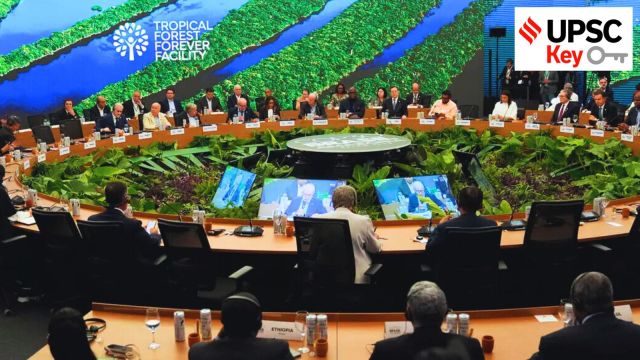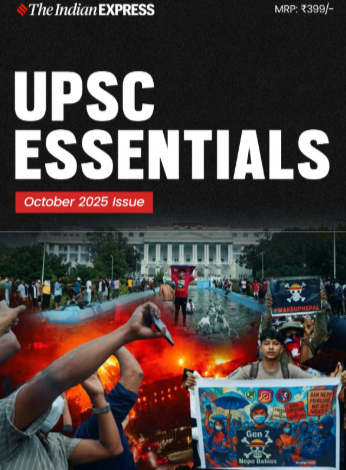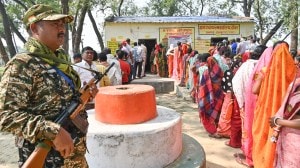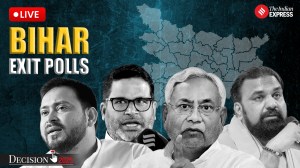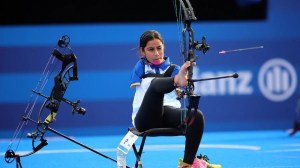
Preliminary Examination: Current events of national and international importance.
Mains Examination: General Studies-II, III: Bilateral, regional and global groupings and agreements involving India and/or affecting India’s interests. Conservation, environmental pollution and degradation, environmental impact assessment.
Story continues below this ad
What’s the ongoing story: In a bid to conserve the world’s tropical forests, a new fund was launched at a high-level event last week on the sidelines of the COP30 climate summit in Belém, Brazil. Known as the Tropical Forest Forever Facility (TFFF), the fund aims to raise and invest $125 billion, channeling returns to developing countries that conserve their forests.
Key Points to Ponder:
— Read about the tropical forests.
— What is the ecological significance of tropical forests?
— Which countries are eligible to benefit from the TFFF?
— Why has the TFFF been launched?
— How is TFFF different from other forest finance proposals?
— What are the concerns associated with TFFF?
Key Takeaways:
— Speaking at the fund’s launch event on November 6, Brazil’s President Luiz Inácio Lula da Silva described the TFFF as “an unprecedented initiative”. He also said that “for the first time, Global South countries will have protagonism in the forest agenda”.
— While Brazil expects the TFFF to transform the world’s approach to environmental conservation, several experts have raised concerns about how it will work in practice.
— The TFFF is an investment fund designed as a permanent, self-financing vehicle through which net returns will be awarded to up to 74 developing tropical forest countries for keeping their existing old-growth forests intact.
Story continues below this ad
— The fund will look to raise $25 billion from wealthy governments and philanthropists, and an additional $100 billion in private investment. Then, the amount will be invested into a mixed portfolio of investments, including public and corporate market bonds, with annual returns used as a reward to tropical forest nations for conserving their forests. Note that payments to countries will be based on satellite remote sensing data that track forest canopy cover annually in a low-cost and transparent manner.
— One of the primary reasons for the launch of TFFF is deforestation. There is more global market value for dead forests than when they are alive. For instance, the benefits of standing forests, such as temperature reduction and wildlife habitat, are taken for granted. Meanwhile, clearing the land for monocultures of crops like soy is financially incentivised.
— The TFFF is designed to change this and pay for the conservation of the world’s major tropical forests, which provide a range of ecosystem services, including carbon storage. Put simply, the fund will help landowners to conserve forests by ensuring that the value they bring as standing forests is more than from cutting them down.
— One of the biggest criticisms of the TFFF is that it is too vulnerable to the volatility of financial markets, as it plans to invest in bonds in developing nations that have historically been prone to fluctuations. For instance, the TFFF may not be able to pay returns to countries if markets crash like they did during the COVID-19 pandemic, or the 2008-09 financial crisis.
Story continues below this ad
— Another concern is that the fund dilutes the legal obligation of developed countries to pay their fair share of nature finance. That is because the TFFF is not officially part of the UN Framework Convention on Climate Change (UNFCCC), and is not subject to the same responsibilities that govern the UN climate negotiations, where the onus falls on developed countries.
Do You Know:
— Delivering India’s statement at the Leaders’ Summit of COP30 in Belem, Brazil, Indian Ambassador to Brazil Dinesh Bhatia said, “India welcomes and supports Brazil’s initiative in establishing the Tropical Forests Forever Facility (TFFF), representing a significant step towards collective and sustained global action for the preservation of tropical forests. India is pleased to join the Facility as an observer.”
— The TFFF could support over 70 Tropical Forest Countries (TFCs) that currently host over 1 billion hectares of moist broadleaf tropical and subtropical forests.
— Eligible participants include tropical countries with broadleaf rainforests that meet the following criteria:
Story continues below this ad
(i) Annual deforestation rate below 0.5%; the annual rate cannot increase above the rate at entry;
(ii) Reliable, auditable, and transparent monitoring systems;
(iii) Mechanisms ensuring fair resource allocation to Indigenous Peoples and Local Communities;
(iv) Sign up to the initiative’s charter – compliance with transparency and accountability standards.
— Notably, high-income countries and areas with monoculture forests are not eligible for the program.
Other Important Articles Covering the same topic:
Story continues below this ad
📍Knowledge Nugget | Tropical Forests Forever Facility (TFFF): A must-know for UPSC Exam
UPSC Prelims Practice Question Covering similar theme:
(1) With reference to the Tropical Forests Forever Facility (TFFF) initiative, consider the following statements:
1. It is a France-led global fund to reward tropical countries for protecting and expanding forests.
2. It aims to mobilise around USD 125 billion through public and private investment, using returns to pay nations that conserve forests.
3. India has decided not to join the TFFF initiative.
How many of the statements given above are correct?
(a) Only one
(b) Only two
(c) All three
(d) None
Story continues below this ad
Syllabus:
Preliminary Examination: Current events of national and international importance.
Mains Examination: General Studies-II, III: Government policies and interventions for development in various sectors and issues arising out of their design and implementation, Awareness in the fields of IT.
What’s the ongoing story: The Ministry of Electronics and Information Technology (MeitY) has unveiled governance guidelines for Artificial Intelligence (AI), which could serve as a blueprint for how India regulates the technology, balancing innovation with accountability and growth with safety.
Key Points to Ponder:
— What is AI?
— What are the various applications of AI?
— Read about the IndiaAI Mission.
— What is Digital Public Infrastructure?
— Know about the key features of the IT Act, 2000.
— What are the concerns associated with the use of AI?
Story continues below this ad
— What are the challenges on the path of regularisation of AI?
Key Takeaways:
— The government had earlier signalled that it may not tighten the regulatory noose on AI just yet, as it believes the technology could help flourish an innovation economy in the country. As such, the guidelines recommend an India-specific risk assessment framework, a national AI incident database, and the use of voluntary frameworks and techno-legal measures, such as embedding privacy or fairness rules directly into system design.
— The guidelines do, however, flag the need to carry out effective “content authentication”, as synthetically generated images, videos and audio flood the Internet. Here, the government has already proposed legal amendments to a key legislation, which would require companies like YouTube and Instagram to add visible labels to AI-generated content.
— The launch of the guidelines comes ahead of the India–AI Impact Summit 2026, which will be the first-ever global AI summit hosted in the Global South.
Story continues below this ad
— The report’s key recommendations are organised around six pillars: infrastructure, capacity building, policy & regulation, risk mitigation, accountability, and institutions.
— Infrastructure: The report calls for expanding access to data and compute resources, including subsidised graphics processing units (GPUs) and India-specific datasets through platforms like AIKosh. It urges integration of AI with Digital Public Infrastructure (DPI) such as Aadhaar and Unified Payments Interface (UPI). It also urges the government to incentivise private investment and adoption by MSMEs, with tax rebates and AI-linked loans.
— Regulation: India’s approach will be agile and sector-specific, applying existing laws (like the IT Act and the Digital Personal Data Protection Act) while plugging gaps through targeted amendments.
— Risk mitigation: As stated earlier, the report proposes an India-specific risk assessment framework to reflect local realities, along with the use of voluntary frameworks and techno-legal measures.
— Accountability: A graded liability regime is proposed, with responsibility tied to function and risk level. Organisations must adopt grievance redressal systems, transparency reporting, and self-certification mechanisms.
— Institutions: The framework envisions a whole-of-government approach, led by an AI Governance Group (AIGG), supported by a Technology & Policy Expert Committee (TPEC), and technically backed by the AI Safety Institute (AISI).
— Capacity building: The guidelines emphasise AI literacy and training for citizens, public servants, and law enforcement. They recommend scaling up existing skilling programs to bridge gaps in smaller cities and enhance technical capacity across government institutions.
— Even as the government looks to encourage AI with little regulatory burden, there are internal red flags over data privacy and inference risks, especially when such systems are being used by key government officials.
— As per the draft amendments to the IT Rules, released last month, social media platforms would have to get users to declare whether the uploaded content is synthetically generated; deploy “reasonable and appropriate technical measures”, including automated tools or other suitable mechanisms, to verify the accuracy of such declaration; and, where such declaration or technical verification confirms that the content is synthetically generated, ensure that this information is clearly and prominently displayed with an appropriate label or notice.
— If they fail to comply, the platforms may lose the legal immunity they enjoy from third-party content, meaning that the responsibility of such platforms shall extend to taking reasonable and proportionate technical measures to verify the correctness of user declarations and to ensure that no synthetically generated information is published without such declaration or label.
Do You Know:
— Artificial intelligence (AI) refers to the field of computer science which aims to make computer systems think, reason, learn, and act to solve a complex system like humans.
— AI can be classified into two types: Artificial Narrow Intelligence (ANI) also known as weak AI and Artificial General Intelligence (AGI) also referred to as strong AI.
Other Important Articles Covering the same topic:
📍AI basics: What are artificial intelligence and machine learning?
📍Trust versus fake reality
Previous year UPSC Prelims Question Covering similar theme:
(2) With the present state of development, Artificial Intelligence can effectively do which of the following? (UPSC CSE 2020)
1. Bring down electricity consumption in industrial units
2. Create meaningful short stories and songs
3. Disease diagnosis
4. Text-to-Speech Conversion
5. Wireless transmission of electrical energy
Select the correct answer using the code given below:
(a) 1, 2, 3 and 5 only
(b) 1, 3 and 4 only
(c) 2, 4 and 5 only
(d) 1, 2, 3, 4 and 5
Syllabus:
Preliminary Examination: General Science and Current events of international importance.
Mains Examination: General Studies-III: Science and Technology- developments and their applications and effects in everyday life.
What’s the ongoing story: Few biologists have acquired the kind of celebrity status that James Watson and Francis Crick did. Their discovery of the double helical structure of the DNA molecule in 1953 is considered one of the biggest breakthroughs in Science, which not only enhanced understanding of how life replicates itself, but also profoundly impacted fields ranging from health to agriculture. So much so that the figure of the twisted ladder structure of the DNA has become a shorthand to represent Science itself. Last week, Watson died at 97.
Key Points to Ponder:
— What is deoxyribonucleic acid (DNA)?
— What are the 4 types of DNA?
— How does DNA function?
— What is DNA analysis?
— What is the significance of the discovery of the double helical structure of DNA?
— What are the implications of modern genetic technologies, such as CRISPR, that stem from the understanding of DNA structure?
Key Takeaways:
— Born in the US, Watson was less than 25 years old when he partnered with Crick to unveil the structure of the DNA (deoxyribonucleic acid). The Nobel Prize-winning discovery revealed how individual traits are passed on from one generation to another, and is often placed alongside the development of quantum theory and the theory of gravitation as the greatest scientific accomplishments of the 20th century.
— DNA is a large molecule containing the genetic information of an individual. This information, encoded in the genes, determines all the individual characteristics of the organism — from physical appearance to internal biology. During reproduction, these genes are replicated and transmitted to the offspring, sometimes with small changes that lead to genetic diversity and drive evolution.
— The chemical existence of DNA was discovered in 1869 by the Swiss chemist Friedrich Miescher. Decades later, it was learnt that chromosomes, made of DNA and some proteins, were associated with inheritance.
— By the 1940s, scientists figured out that it was DNA, and not the proteins inside the chromosomes that carried genetic information. But scientists still did not know how DNA was able to store genetic information or how it was passed on. Thus, its structure had to be deciphered.
— In 1952, Watson and Crick experimented with three-dimensional wooden models to fit into a structure that matched the information provided by other scientists. Clues came through chemical analysis and images obtained from X-ray crystallography methods. Under British chemist Rosalind Franklin’s supervision, her student Raymond Gosling took a historic X-ray photograph (called Photo 51), which showed the double-helix structure of DNA. Watson and Crick saw this photo and some of her unpublished data, which served as the basis of their DNA model.
— The final Watson-Crick wooden model had two long strands, each with a series of four nitrogen-containing compounds — Adenine (A), Thymine (T), Cytosine (C) and Guanine (G) — held in a chain by some sugar and phosphate compounds.
— The Adenine on one strand is always opposite the Thymine on the other, while the Cytosine is paired opposite Guanine. The two parallel strands were shaped in a twisted ladder of sorts, to account for stability, compactness and other features revealed in earlier experiments.
— The discovery of the DNA structure sparked a flurry of new research, birthing fields like molecular biology, biotechnology, gene modification and editing.
Other Important Articles Covering the same topic:
📍James Watson, who helped discover the structure of DNA, dies at the age of 97
Previous year UPSC Prelims Question Covering similar theme:
(3) Consider the following statements: DNA Barcoding can be a tool to: (UPSC CSE 2022)
1. assess the age of a plant or animal.
2. distinguish among species that look alike.
3. identify undesirable animal or plant materials in processed foods.
Which of the statements given above is/are correct?
(a) 1 only
(b) 3 only
(c) 1 and 2 only
(d) 2 and 3 only
(4) With reference to the recent developments in science, which one of the following statements is not correct? (UPSC CSE 2019)
(a) Functional chromosomes can be created by joining segments of DNA taken from cells of different species.
(b) Pieces of artificial functional DNA can be created in laboratories.
(c) A piece of DNA taken out from an animal cell can be made to replicate outside a living cell in a laboratory.
(d) Cells taken out from plants and animals can be made to undergo cell division in laboratory petri dishes.
POLITICS
Syllabus:
Preliminary Examination: Current events of national and international importance.
Mains Examination: General Studies-II: India and its neighbourhood- relations.
What’s the ongoing story: Prime Minister Narendra Modi will Tuesday leave for Bhutan on a two-day state visit to attend the 70th birthday celebrations of Jigme Singye Wangchuck, the fourth king of Bhutan and the father of the current ruler.
Key Points to Ponder:
— Read about the Punatsangchhu-II Hydroelectric Project.
— What is the history of India-Bhutan relations?
— What is the strategic significance of Bhutan for India?
— What is India’s ‘neighbourhood first’ policy?
— What are the areas of cooperation (hydroelectricity, tourism, economic) between India and Bhutan?
— What are the challenges in India-Bhutan bilateral relations?
— What are the geopolitical implications of India’s continued strategic support to Bhutan in light of China’s expanding influence in the Himalayas?
Key Takeaways:
— The Prime Minister will meet King Jigme Khesar Namgyel Wangchuck and they will inaugurate the jointly developed 1020-MW Punatsangchhu-II Hydroelectric Project. Modi will also meet Bhutan Prime Minister Tshering Tobgay.
— The Ministry of External Affairs said this was a special visit to honour the fourth king, who has played an instrumental role in shaping Bhutan’s relationship with India. Between 1974 and 2016, he worked with Indian leaders to shape ties from energy to security.
— The visit coincides with the exposition of the sacred Piprahwa relics of Lord Buddha from India. Prime Minister Modi will offer prayers to the holy relics at Tashichhodzong in Thimphu and participate in the Global Peace Prayer Festival organised by the Royal Government of Bhutan.
— The inauguration of Punatsangchhu-II is considered a major milestone for an energy partnership between the two countries. The two countries are also looking at strengthening linkages by boosting connectivity through rail links and inland waterways transport.
— The two sides will also be discussing the new areas of cooperation in “fin-tech, innovation and entrepreneurship”, and “space tech”.
From The Editorial Page- “ India-Bhutan story offers lessons for managing asymmetric relationships”
— C. Raja Mohan writes- “Prime Minister Narendra Modi’s visit to Bhutan today underlines the quiet resilience of one of India’s most successful partnerships — an enduring bond that thrives despite vast asymmetry in size and the significant changes in the regional environment. Amid the perennial gloom about Delhi’s regional diplomacy, the India-Bhutan story stands out as a reminder that mutually respectful and productive neighbourhood ties are possible. It is a moment of optimism for Indian diplomacy.”
— “The visit comes as the Himalayan kingdom pursues economic diversification and a wider international profile. It reaffirms India’s commitment to Bhutan’s security and development, and its continuing confidence in India as its principal partner. The exposition of the Buddha relics from Piprahwa in Bhutan this week is a vivid example of the enduring and deep spiritual ties between Delhi and Thimphu.”
– “The framework of modern India-Bhutan relations was laid in the 1949 Treaty of Friendship, which reflected the geopolitical realities of the time. Independent India had inherited the British colonial structure of protectorates and buffer states tied to the Raj. Prime Minister Jawaharlal Nehru essentially continued that approach when he signed security treaties with the three Himalayan states — Bhutan, Nepal, and Sikkim — during 1949-50.”
— “Under the 1949 treaty, Bhutan agreed to be “guided by India” in the conduct of its external affairs, while India promised not to interfere in the internal affairs of Bhutan. This framework, however, became increasingly unsustainable amid the rise of nationalism in the Himalayan states, the weakening of India’s relative power, and the inevitable intrusion of other global powers — the United States, the Soviet Union, and China.”
— “The protectorate model collapsed eventually: Nepal disregarded many treaty provisions, and Delhi incorporated Sikkim into the Indian Union. Bhutan, however, managed the transition with remarkable suppleness. It steadily expanded its strategic autonomy without locking itself into persistent confrontation with Delhi, as Nepal did, or being absorbed by India, like Sikkim.”
— “The maturity of leadership in both capitals and their recognition of the shared strategic stakes ensured broad political stability. India helped Bhutan build its administrative institutions, train its armed forces, and develop its economy. Hydropower cooperation, launched in the 1960s, became the central pillar of Bhutan’s growth and the symbol of a mutually beneficial economic partnership. Delhi, in turn, learnt to resist the temptation to deal with Thimphu with a heavy hand.”
— “Delhi, for its part, recognised the need to recalibrate ties to match Bhutan’s domestic evolution and changing global conditions. The end of the Cold War, Bhutan’s democratic turn, and its growing international engagement demanded a relationship grounded in sovereign equality.”
— “The landmark revision of the 1949 treaty in 2007 provided that new basis. The most consequential change was the deletion of the clause requiring Bhutan to be “guided” by India in foreign affairs. The new text instead affirmed “mutual respect for each other’s independence, sovereignty, and territorial integrity”. They also agreed not to let their territories be used against the other.”
— “This shift acknowledged Bhutan’s pursuit of an independent foreign policy while retaining close security and developmental cooperation with India. It was an act of strategic confidence by Delhi and of political wisdom by Thimphu. Yet the 2007 treaty did not lessen the need for India to continually tend this partnership amid shifting regional and global dynamics — none more consequential than China’s rise as a Himalayan and global power.”
—”Like all India’s neighbours, Bhutan is navigating a strategic landscape transformed by China’s ascent. Sharing a long and disputed border with China and occupying a sensitive location in the eastern Himalayas, Bhutan faces unique challenges. Thimphu has no formal diplomatic ties with Beijing, but the two sides hold regular consultations to resolve their boundary dispute. The Doklam plateau — the scene of the 2017 India-China standoff — remains a critical flashpoint. Bhutan’s approach has been cautious and deliberate: it seeks a peaceful boundary settlement while ensuring that no external power compromises its sovereignty or India’s vital security interests.”
— “At the same time, Bhutan has broadened its diplomatic and economic horizons. It has cultivated partnerships with Japan, South Korea, and several European nations, and is expanding its presence in multilateral forums. Yet, even as Thimphu diversifies, it has deepened ties with Delhi — through new hydropower projects, cross-border railway links, digital initiatives, and educational cooperation.”
— “India’s experience with Bhutan offers valuable lessons for managing asymmetric relationships— an enduring challenge in South Asia, where size disparities are vast.”
— “In a region often defined by mistrust and imbalance, India’s relationship with Bhutan shows that asymmetry need not produce antagonism. The first lesson is that sustained development cooperation — rooted in transparency and local priorities — builds enduring goodwill. The second is that security cooperation works best when it is mutually beneficial rather than imposed. Third, resolving disputes where possible and managing them sensibly when they can’t is critical to avoid the poisoning of bilateral relations. And finally, strengthening the shared culture provides depth to bilateral relations.”
Do You Know:
— Neighbourhood First policy guides India’s relations with countries in its immediate neighbourhood. It focuses on creating mutually beneficial, people-oriented, regional frameworks for stability and prosperity through the building of physical, digital and people-to-people connectivity.
Other Important Articles Covering the same topic:
📍Bhutan’s unique position in India’s regional strategy
UPSC Mains Practice Question Covering similar theme:
What role does hydropower play in the India-Bhutan economic partnership? In what ways does India’s investment in Bhutan’s renewable energy ambitions contribute to its own sustainability goals?
NATION
Syllabus:
Preliminary Examination: Current events of national and international importance.
Mains Examination: General Studies-II, III: Bilateral, regional and global groupings and agreements involving India and/or affecting India’s interests. Conservation, environmental pollution and degradation, environmental impact assessment.
What’s the ongoing story: With a key demand of the developing countries on international finance getting included in the provisional agenda of the conference, the COP30 climate meeting in Belem, Brazil, which began Monday, is set to witness a fresh stand-off between the developed and developing nations on the issue of finance which seemed to have been settled last year.
Key Points to Ponder:
— Read about the UN Framework Convention on Climate Change and the 2015 Paris Agreement.
— What is Conference of the Parties or COP?
— What were the major outcomes of the COP29?
— What is climate finance?
— What is Carbon tax?
— What is the principle of “common but differentiated responsibility and respective capabilities”?
— What are Nationally-Determined Contributions?
— How can India balance its development needs with its increasing global leadership on climate finance and climate action?
Key Takeaways:
— The list of items on the provisional agenda of the two-week conference includes a discussion on Article 9, paragraph 1 of the Paris Agreement, which says that developed countries “shall provide financial resources” to assist developing country parties with respect to mitigation and adaptation.
— The developing countries, including India, have been arguing that this particular provision had not been addressed in the agreement on finance that was finalised at last year’s climate meeting, COP29, in Baku, Azerbaijan. That agreement only dealt with the obligation of developed countries to “mobilise” financial resources for developing countries. The agreement finalised in Baku asked the developed countries to mobilise at least US$ 300 billion every year from 2035, tripling their current obligation.
— The Paris Agreement obligates the developed nations to both “provide” finance (Article 9.1) as well as “take the lead in mobilising climate finance” (Article 9.3) for developing countries. These two are related but independent obligations. One does not negate or take precedence over the other.
— Article 9.1 can imply the provision of public or government funds by the developed countries, while Article 9.3 allows them to mobilise financial resources from private or any other source. — The developing countries have been demanding that international climate finance should have a greater component of public funds, should be new, additional and predictable, and should mostly be in the form of grants or soft loans. They have maintained that last year’s finance agreement only addressed the mandate in Article 9.3. The obligation under Article 9.1 still remains outstanding.
— They have been using this argument to push back, after their demand for raising the amount of climate finance from the current US$ 100 billion a year to US$ 1.3 trillion a year had been ignored in last year’s agreement. The US $300 billion a year amount had come as a big disappointment for the developing countries, with India making an uncharacteristically angry statement in reaction.
— At the annual mid-year conference in Bonn in June this year, the developing countries had disrupted the talks for almost two days on this issue of Article 9.1 obligation. It was then decided that this issue be proposed to be included as a formal agenda item in COP30.
— Accordingly, the provisional agenda has listed this issue at the request of Bolivia, which moved the proposal on behalf of the Like-Minded Developing Countries (LMDC) group, which includes India.
— The agenda also has an item on “trade-restrictive unilateral measures”, a reference to Carbon Border Adjustment Mechanism (CBAM), a form of carbon tax imposed by the European Union on the import of certain goods. CBAM seeks to impose a tariff on imported goods like steel or aluminum if their production had a greater carbon footprint than the standards prescribed for EU manufacturers.
— The developing countries have objected to CBAM, saying this was a restrictive trade practice in the garb of climate regulation, and violative of international trade rules. This issue had come up at last year’s meeting in Baku as well, and held up negotiations for two days. The matter has remained unsettled. The provisional agenda has to be approved by consensus at the COP meetings.
Do You Know:
— In 1992, at the Rio Earth Summit, 154 countries signed a multilateral treaty called the United Nations Framework Convention on Climate Change (UNFCCC). It aimed to stabilise greenhouse gas concentrations “at a level that would prevent dangerous anthropogenic (human-induced) interference with the climate system.”
— The treaty came into force two years later, and since then, countries which are part of the UNFCCC, meet every year at different venues. Today, there are 198 ‘parties’ or signatories of the Convention.
Other Important Articles Covering the same topic:
📍Knowledge nugget of the day: Paris Agreement
📍COP29: Why it matters and what is the history behind it
Previous year UPSC Prelims Question Covering similar theme:
(5) With reference to the Agreement at the UNFCCC Meeting in Paris in 2015, which of the following statements is/are correct? (UPSC CSE 2016)
1. The Agreement was signed by all the member countries of the UN and it will go into effect in 2017.
2. The Agreement aims to limit the greenhouse gas emissions so that the rise in average global temperature by the end of this century does not exceed 2°C or even 1.5°C above pre-industrial levels.
3. Developed countries acknowledged their historical responsibility in global warming and committed to donate $ 1000 billion a year from 2020 to help developing countries to cope with climate change.
Select the correct answer using the code given below.
(a) 1 and 3 only
(b) 2 only
(c) 2 and 3 only
(d) 1, 2 and 3
Previous year UPSC Mains Question Covering similar theme:
Describe the major outcomes of the 26th session of the Conference of the Parses (COP) to the United Nations Framework Convention on Climate Change (UNFCCC)? What are the commitments made by India in this conference? (UPSC CSE 2021)
THE IDEAS PAGE
Syllabus:
Preliminary Examination: Current events of national and international importance.
Mains Examination: General Studies-II, III: Effect of policies and politics of developed and developing countries on India’s interests, Awareness in the fields of IT.
What’s the ongoing story: Syed Akbaruddin writes- “Beneath the choreography of the Xi-Trump meeting at the APEC Summit in Busan, Republic of Korea, President Xi Jinping proposed a bigger idea than tariff swaps: the establishment of a World Artificial Intelligence Cooperation Organization (WAICO), a multilateral body to shape the rules of the AI age. The G-2 handshake on 30 October drew headlines. The Chinese AI governance bid, announced on 1 November building on an idea first flagged in China by Premier Li Qiang in July, may shape the century.”
Key Points to Ponder:
— What is Artificial Intelligence (AI)
— What is WAICO?
— How does WAICO reflect China’s aim to set global rules in the AI age?
— Read about the Global AI Governance Initiative.
— What are the initiatives taken by India to integrate AI?
— What are the important bilateral cooperation signed by India to promote AI?
— What steps should be taken to ensure that AI governance remains transparent and inclusive for developing countries?
— Why are AI standards becoming a new form of global power and influence?
Key Takeaways:
— “WAICO is not an isolated initiative. It is the latest link in a chain of Beijing-authored frameworks designed to rewrite multilateralism in China’s syntax. Over the past four years, China has launched the Global Development, Security, Civilisation, and AI Governance Initiatives. Each positions Beijing as a rule-maker rather than a rule-taker. The Global AI Governance Initiative, announced at the Third Belt and Road Forum in 2023, was the conceptual rehearsal; WAICO is its institutional sequel.””
— “Add this year’s Tianjin Initiative on Global Governance and the pattern is clear. Every forum is a launchpad for a new Chinese frame. WAICO is the algorithmic expression of that ambition.
— “The structure is formally multilateral, yet functionally China-centric. The proposed headquarters is Shanghai. Geography is not neutral. When finance was globalised and trade liberalised, the West wrote the rules at Bretton Woods and housed the referees in Geneva. Now, Beijing seeks both the rulebook and the referee under its roof.”
— “Scepticism shouldn’t become cynicism. China’s willingness to invest political capital and cash in AI governance deserves consideration. WAICO’s Action Plan for Global AI Governance proposes a technology-sharing platform and an algorithmic compensation fund financed by global AI revenues. Progressive ideas, but who controls the fund? Who decides which algorithms are safe, fair, or exportable? Without transparent oversight and real checks, noble aims harden into monopolies of influence.”
— “A rare success in multilateral cooperation this year has been the United Nations’ AI track. In August, the UN General Assembly agreed to establish an Independent International Scientific Panel on AI and a Global Dialogue on AI Governance to advance scientific understanding and ensure informed deliberations. China presents WAICO as a complement to these efforts, describing it as a “support mechanism” that operationalises the UN’s aims. The test is whether the new body can mirror the UN’s openness or install a parallel lane with different defaults.”
— “Western capitals view it differently. Washington opposes any forum where the digital rules are set on Chinese terms. Brussels, advancing its AI Act, will hedge for interoperability through the UN but guard its regulatory primacy.”
— “For much of the Global South, the initiative is enticing. It promises long-denied access to technology, funding, and training. Beijing speaks to the South’s desire for inclusion, and that resonance should not be underestimated. India should recognise the appeal, but respond with caution. It should engage without endorsing.”
— “India could suggest terms. First, a clear firewall between governance and industrial policy so that standards do not become a backdoor for market capture. Second, compute access quotas for developing countries, delivered through a transparent registry. Third, a grievance process that allows member states, firms, and civil society to appeal decisions.”
— “India also needs to look beyond formal institutions. Networks of regional hubs, flexible partnerships among governments and research institutions, and adaptive coalitions that evolve with technology can perhaps offer a more plural and resilient model. These avoid rigid architectures that replicate geopolitical hierarchies.”
— “As AI becomes the currency of influence, even well-meaning initiatives can be weaponised. Standards are power. Once defaults are set, they are hard to rewrite. Better to ask hard questions early than live with rules others write.”
Previous year UPSC Mains Question Covering similar theme:
Introduce the concept of Artificial Intelligence (AI). How does Al help clinical diagnosis? Do you perceive any threat to privacy of the individual in the use of Al in healthcare? (UPSC CSE 2023)
| ALSO IN NEWS |
| All about Booker Prize, the most prestigious award for fiction books |
The Booker Prize was first awarded in 1969 to promote reading and literature. Publishers Tom Maschler and Graham C. Greene secured financial backing from Guyana-based conglomerate Booker McConnell that had recently expanded its interests to literary estates. The inaugural Booker Prize was awarded to PH Newby for Something to Answer For. Several Indian writers as well as writers of Indian-origin have won the Prize. These include VS Naipaul in 1971 for In A Free State, Salman Rushdie for Midnight’s Children in 1981, Arundhati Roy for The God of Small Things (1997), Kiran Desai for The Inheritance of Loss (2006), Aravind Adiga for The White Tiger (2008). Midnight’s Children won the Booker of Bookers in 1993 and again as The Best of the Booker in 2008. |
| Costlier inputs, slower exports: How QCOs backfired on MSMEs, exporters |
At a time when India is rapidly opening its market to foreign goods under new Free Trade Agreements (FTAs), a parallel effort to improve quality standards in Indian products has proved to be ill-planned and costly, not only for India’s much-needed export competitiveness but also for domestic Micro, Small and Medium Enterprises (MSMEs).
A Niti Aayog report, which is yet to be made public, by the ‘High-Level Committee on Non-Financial Regulatory Reforms’ said that a majority of the Quality Control Orders (QCOs) cover raw materials and intermediate products instead of finished goods, and in several cases, the new quality standards are not even in line with global benchmarks.
QCOs — or legal directives issued by government ministries or departments under the Bureau of Indian Standards Act require products made or imported into India to meet specific standards — have increased input costs and caused production delays for downstream industries due to the limited availability of accredited testing facilities in the country, Niti Aayog said. The imposition of quality norms, particularly on intermediate products, has translated directly into “reduced cost competitiveness for downstream manufacturers”, the report said. |
| PRELIMS ANSWER KEY |
| 1. (a) 2. (b) 3. (d) 4. (a) 5. (b) |
Subscribe to our UPSC newsletter. Stay updated with the latest UPSC articles by joining our Telegram channel – Indian Express UPSC Hub, and follow us on Instagram and X.
🚨 Click Here to read the UPSC Essentials magazine for October 2025. Share your views and suggestions in the comment box or at manas.srivastava@indianexpress.com🚨

